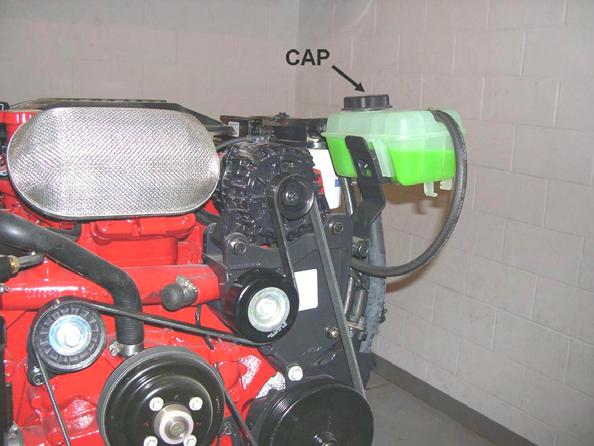
2 minute read
Troubleshooting Closed Cooling System Engines with Clear Hoses and Gauges
Overheat Diagnosis
Next, use a cylinder leakdown tester to pressurize each cylinder, one at a time, using the tester’s operating instructions. As each cylinder is pressurized, watch the water level in the bypass hoses. If the water level rises when pressurizing a cylinder, then that cylinder is leaking compression into the cooling system. Be sure to conduct the test on all cylinders and record the results for future reference. If a leak is found during this test, engine disassembly will be required to pinpoint the exact cause of the leak.
Troubleshooting Closed Cooling System Engines with Clear Hoses and Gauges
One tool that can be used on this type of cooling system is a cooling system pressure tester (VP P/N 885531 or equivalent). This type of tester screws on in place of the reservoir cap (figure 4). CAUTION: the reservoir operates under pressure and the contents are hot.
Do not remove the cap from an engine that has been run recently. Serious injury could result.
Figure 4 Reservoir Cap
Overheat Diagnosis
Once the tool has been installed, and the system has been refilled to half full in the reservoir, the cooling system can be pressurized with the tool and the gauge watched for any significant decrease in pressure. Rapid pressure drops indicate leaks. The leak(s) could be external, internal in the engine (cracked block), internal in the cooler or internal/external at any installed accessory. This type of testing is good for finding low pressure leaks since the cooling system operates at less than approximately 11 psi (75 Kpa). This test will NOT reliably detect leaks between a cylinder and the cooling system. This type of leak results in cylinder compression leaking into the cooling system while the engine is running. The proper test to find this type of leak is to hook up a cylinder leakdown tester to each cylinder, one at a time, and conduct a leakdown test while watching the coolant level in the reservoir (with the cap removed and the reservoir half full). As air is applied to the cylinder any leak into the cooling jacket will result in air being pushed into the cooling jacket. This will cause a rise in coolant level in the reservoir. If the coolant level rises when pressurizing a cylinder, then that cylinder is leaking compression into the cooling system. Be sure to conduct the test on all cylinders and record the results for future reference.




